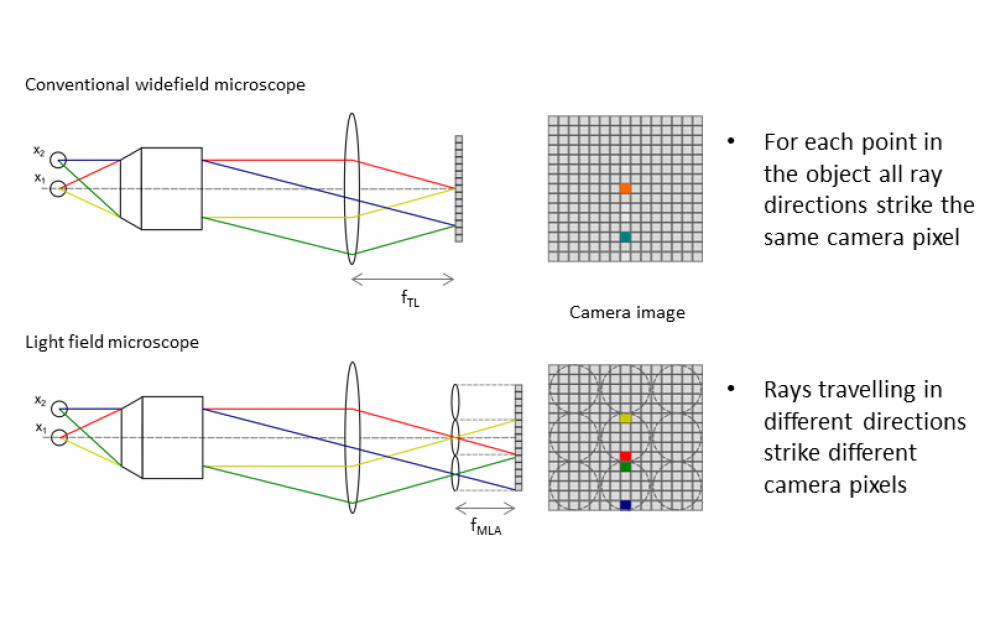Light field microscopy (LFM) is a fast, volumetric imaging technique able to capture 3D image information at a speed limited only by the frame rate of the camera.
In a conventional microscope all light rays from a given position in the object are imaged onto the sample camera pixel and directional (angular) information is lost. Inserting a microlens array between the native image plane and the camera separates light rays traveling in different directions onto different camera pixels. The resulting 4D light field can be analysed to allow the sample to be viewed from different perspectives, refocus the image post capture and reconstruct the 3D structure.

In the TouchLab we have applied LFM to investigate the properties and behaviour of C. elegans – a mm-sized nematode worm extensively studied as a model organism particularly in developmental biology and neuroscience. The ability to visualise an extended 3D volume simultaneously has allowed us to study the posture and locomotion of the organism in 3D environments and explore the effects of genetic mutations which are known to affect the topography of its cuticle1.
Depth maps for a freely swimming C.elegans specimens based on defocus and correspondence measures computed from a light field microscopy dataset.
We have also used LFM to visualize activation of mechanosensory neurons2, expressing a genetically encoded calcium ion indicator, in response to controlled mechanical stimuli. The ability to capture image data simultaneous across different depths allows accurate assessment of the synchronization of the response from different neurons, impossible using sequential 3D imaging techniques.
1https://doi.org/10.1145/1179352.1141976
2https://doi.org/10.1371/journal.pone.0200108
3https://doi.org/10.1364/BOE.7.002877
 Close
Close

